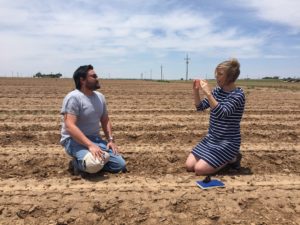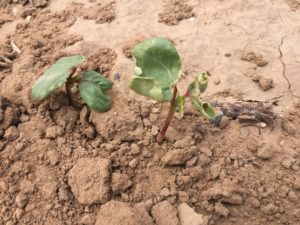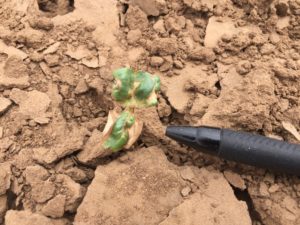AgriLife Extension 2019 alternative crop replanting guide now available online
Writer: Susan Himes, 325-657-7315, [email protected]
Contacts: Dr. Calvin Trostle, 806-723-8432, [email protected]
Dr. Murilo Maeda, 806-746-6101, [email protected]

LUBBOCK — The Texas A&M AgriLife Extension Service’s 17th annual late-planting guide, “2019 Alternative Crop Options after Failed Cotton and Late-Season Crop Planting for the Texas South Plains,” is now available online at https://tinyurl.com/yybmpbbo.
“The annual guide is a ‘first things’ approach to helping farmers who have lost crops or have been unable to plant,” said author Dr. Calvin Trostle, AgriLife Extension agronomist, Lubbock.
A variety of wild weather conditions affected many Texas producers this year and in some areas delayed planting or wiped out entire crops. The updated late-planting guide is geared toward the South Plains, but contains helpful information for adjacent regions.

“Whether to keep a field of young cotton that may have excessive damage is a tough choice,” said Dr. Murilo Maeda, AgriLife Extension cotton specialist, Lubbock, who contributed to the updated guide. “Sometimes we need to wait a week to know for sure if we have a keeper.”
The guide draws on Trostle’s 20-plus years as an agronomist in West Texas and answers questions about replanting and late-planting options, including the last recommended planting dates for several potential crops.
“We always hope the annual replanting guide is not needed, but the frequency of damaging storms and winds in the Texas South Plains on vulnerable cotton seedlings unfortunately means farmers face undue risk until the crop is well established,” said Trostle.
The guide has three primary goals:
- Offer guidelines for crop replant options after failed crops, especially cotton.
- Assist with late-season planting decisions where timely planting, duration to crop maturity and fall weather risks may impact successful cropping.
- Provide contractor contact information as well as recent approximate pricing, particularly for crops where price is fixed at contract signing.
“As planting season drags on in the South Plains, severe weather has producers in the area scrambling to sand fight, plant and replant cotton,” Maeda said. “Unfortunately, many early planted acres that were looking great have been damaged by hail, blowing sand and standing water. While we are pretty late already for planting or replanting cotton in many parts of the Panhandle, the Lubbock area is not too far out either.”
Cotton stands damaged by hail and sand may survive and have good yield potential, but producers need to account for the delay in early season growth caused by such damage, and weigh that against a new planting, Maeda said.
“As we know all too well, season length along with water availability are the main limiting factors in the region,” said Maeda. “Although we are not necessarily recommending folks plant/replant cotton at this point in time, those producers considering replanting (or planting since some did not have enough time to cover all their acres), should choose varieties that are as early as possible. This is to try to minimize possible end-of-season problems with fiber quality, in case of an early freeze and/or lack of heat unit accumulation, which are fairly common.”

Updates, changes and additions to the guide from the two previous editions include:
- Added comments on cotton variety selection, growth and regrowth after hail damage, and targeting late-season uniformity across the field.
- Updated online chemical label look-up information.
- Added comments about replant and late-plant options for organic cropping.
- Cautions about replanting grain sorghum and other crops behind cotton if dicamba has been applied.
- An update on sugarcane aphid and possible implications for grain sorghum in the South Plains.
- Links to grain sorghum hybrids that express aphid tolerance.
- Reporting of recent research that suggests hybrid pearl millet is a poor host of sugarcane aphid and a possible alternative forage option to sorghum family forages.
- Proso millet for grain is now included as a potential short-season alternative crop for late planting.

Additional AgriLife Extension guides and resources covering a wide range of crop and pest issues related to the South Plains may be found at https://lubbock.tamu.edu/.
-30


